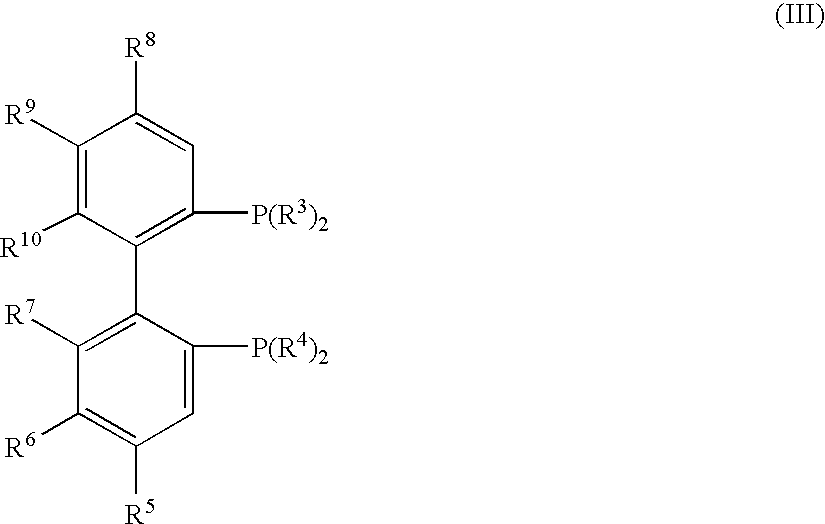Process for producing optically active-3-quinuclidinols
a technology production method, which is applied in the direction of organic chemistry, etc., can solve the problems of high cost, waste of undesired enantiomer, and low optical purity of optically active 3-quinuclidinol obtained by the method, and achieve high optical purity and high yield
- Summary
- Abstract
- Description
- Claims
- Application Information
AI Technical Summary
Benefits of technology
Problems solved by technology
Method used
Image
Examples
example 1
[0102] To a 100-mL autoclave were added 3-quinuclidinone (500 mg, 4.0 mmol), [RuCl(p-cymene)((R)-DM-SEGPHOS)]Cl (4.1 mg, 0.004 mmol), and (R)-DAIPEN (5.0 mg, 0.016 mmol). Under a nitrogen atmosphere, IPA (4 mL) and potassium t-butoxide / IPA solution (1.0 mol / L, 0.4 mL) were added thereto. Then, the mixture was stirred under a hydrogen pressure of 3 MPa at 30° C. for 15 hours. After analysis of the reaction solution, (R)-3-quinuclidinol was obtained at an optical purity of 90.8% ee and a conversion ratio of 99% or more.
example 2
[0103] To a 100-mL autoclave were added 3-quinuclidinone hydrochloride (500 mg, 3.1 mmol), [RuCl(p-cymene) [(R)-DM-SEGPHOS]]Cl (3.2 mg, 0.003 mmol), and (R)-DAIPEN (3.9 mg, 0.012 mmol). Under a nitrogen atmosphere, added were IPA (1 mL) and potassium t-butoxide / IPA solution (1.0 mol / L, 3.1 mL) were added thereto. Then, the mixture was stirred under a hydrogen pressure of 3 MPa at 30° C. for 8 hours. After analysis of the reaction solution, (R)-3-quinuclidinol was obtained at an optical purity of 86.3% ee and a conversion ratio of 92.3%.
PUM
 Login to View More
Login to View More Abstract
Description
Claims
Application Information
 Login to View More
Login to View More - R&D
- Intellectual Property
- Life Sciences
- Materials
- Tech Scout
- Unparalleled Data Quality
- Higher Quality Content
- 60% Fewer Hallucinations
Browse by: Latest US Patents, China's latest patents, Technical Efficacy Thesaurus, Application Domain, Technology Topic, Popular Technical Reports.
© 2025 PatSnap. All rights reserved.Legal|Privacy policy|Modern Slavery Act Transparency Statement|Sitemap|About US| Contact US: help@patsnap.com



